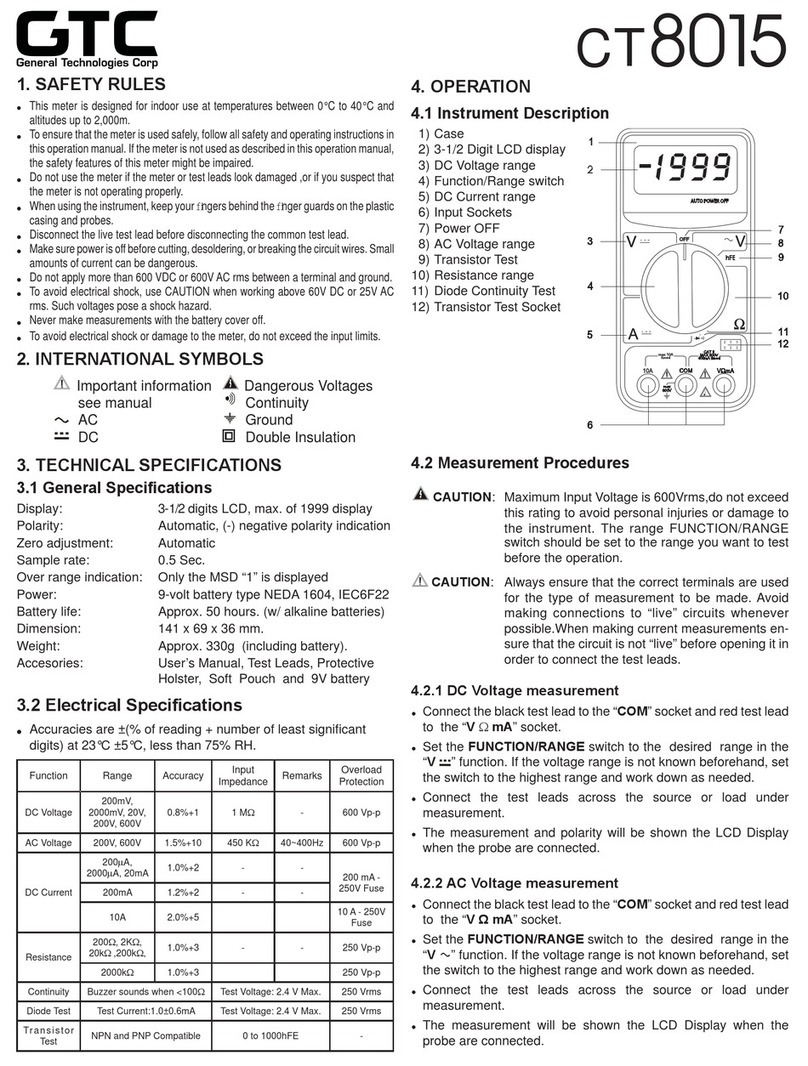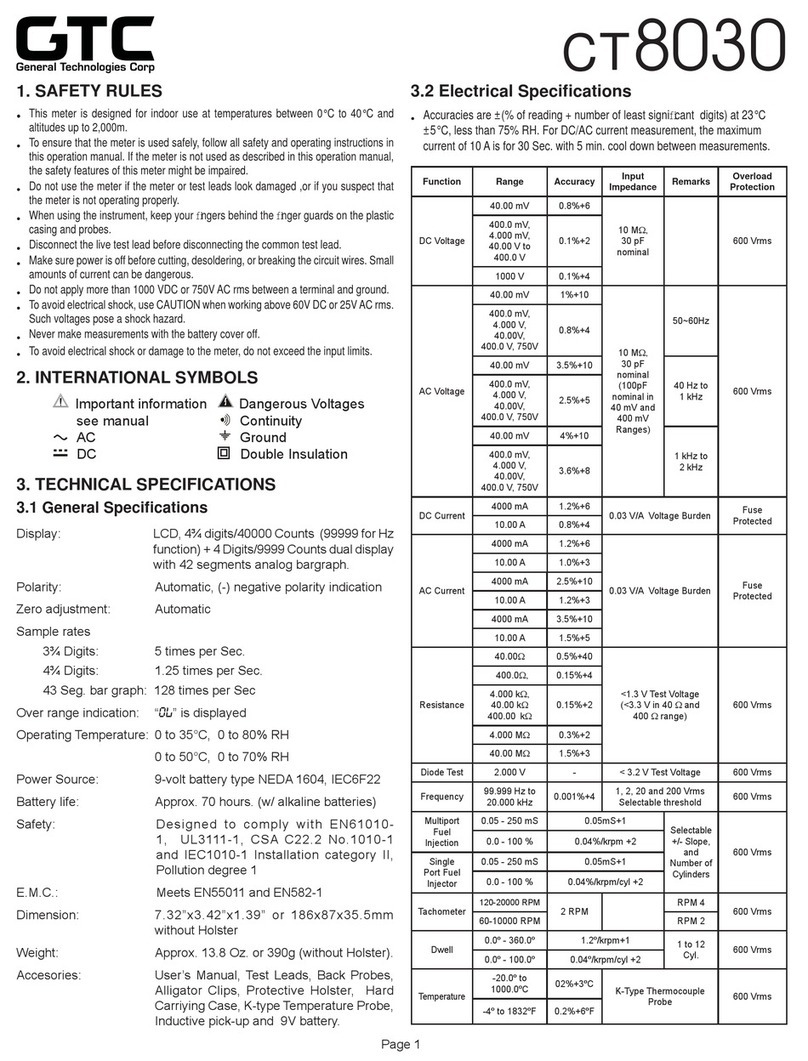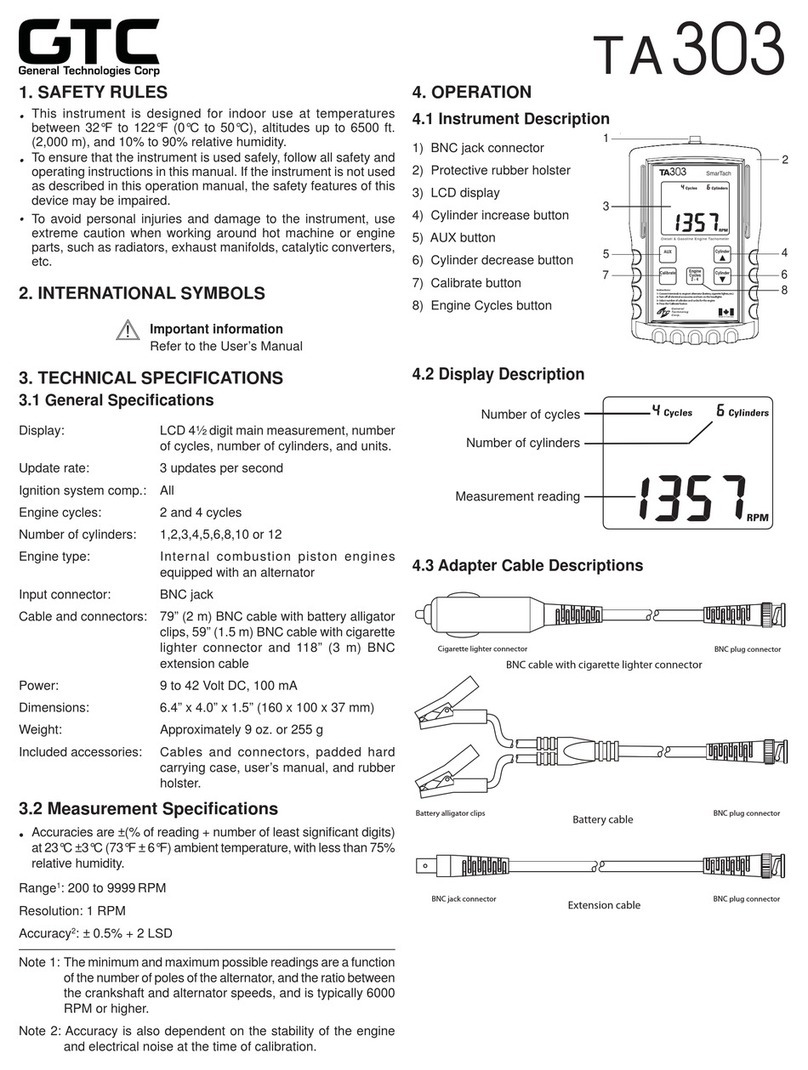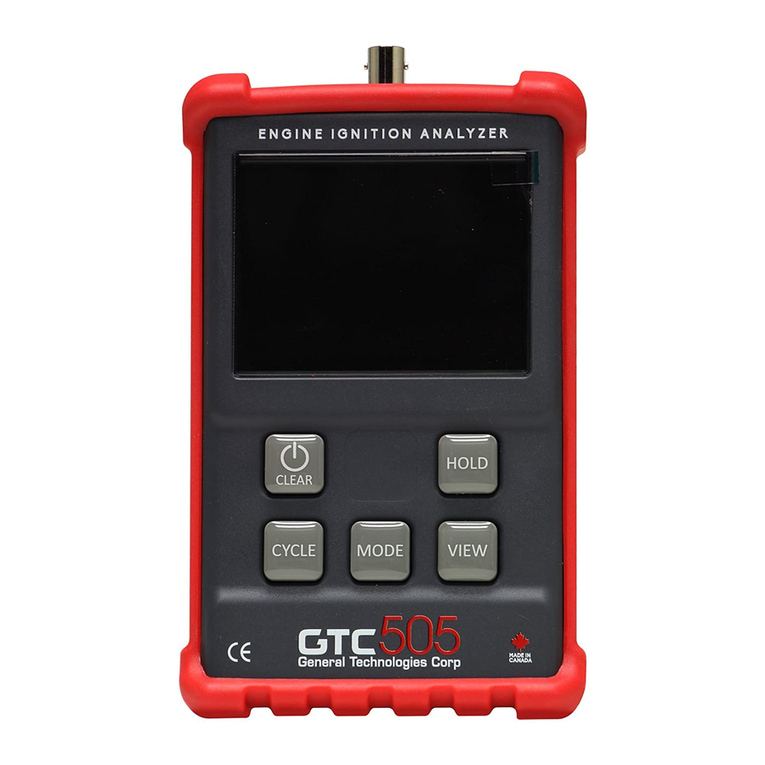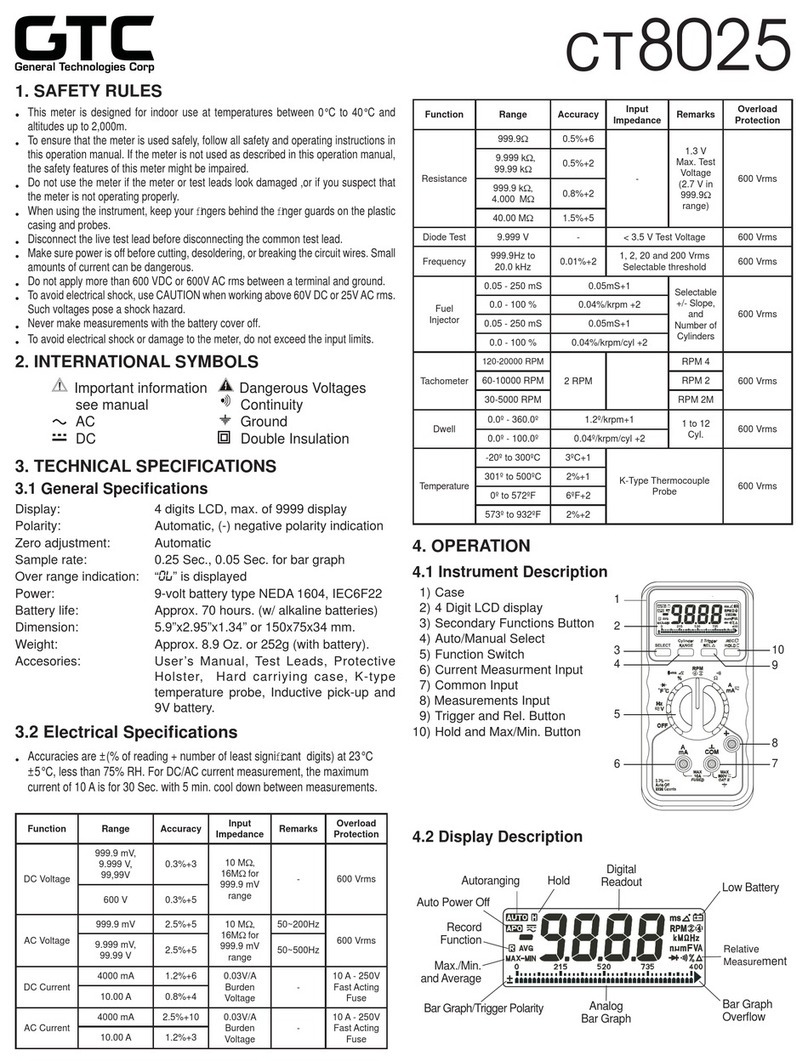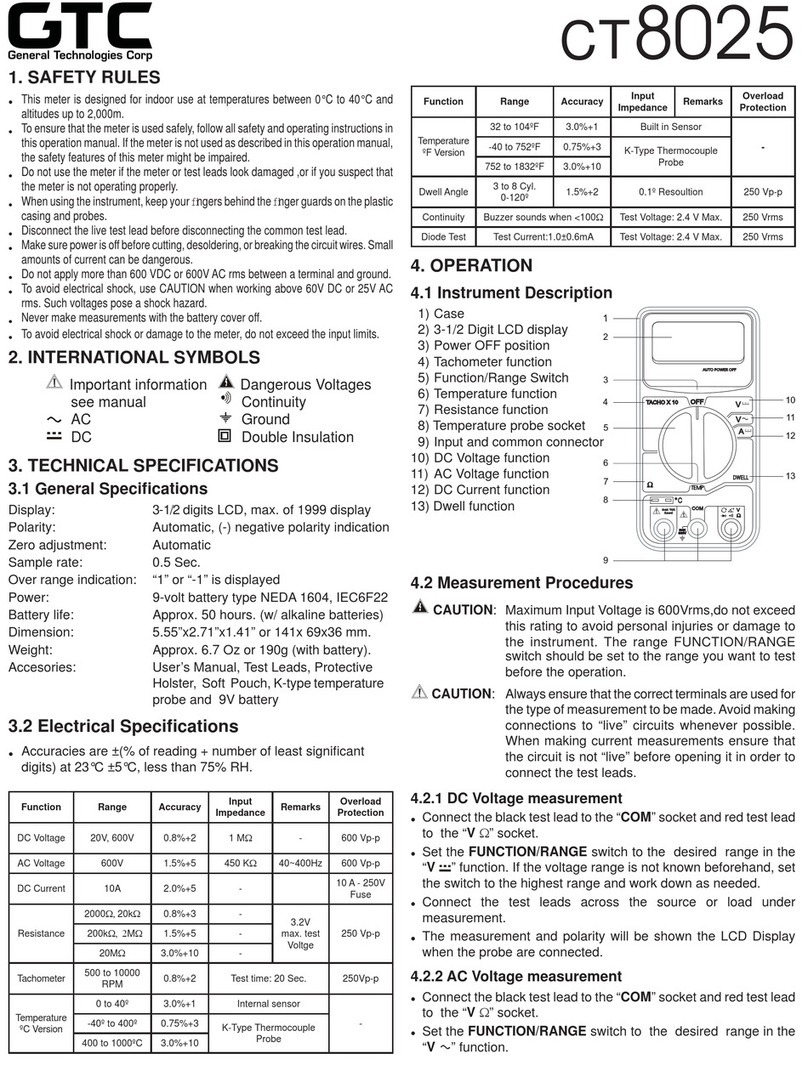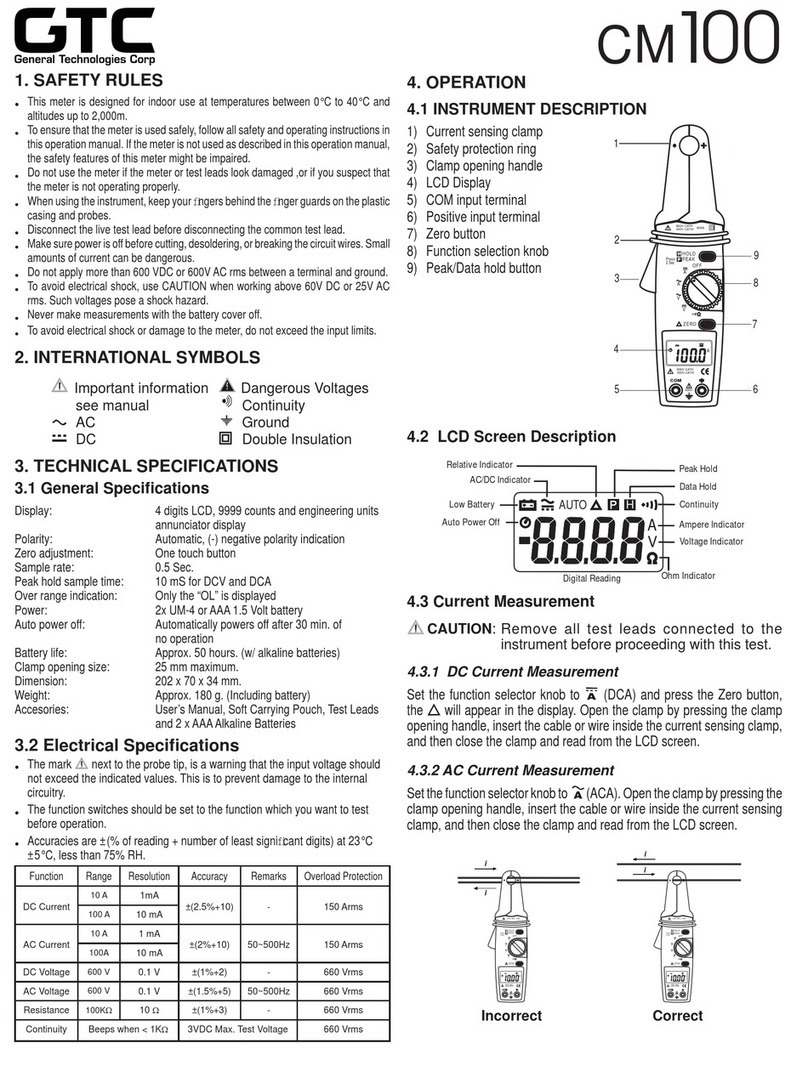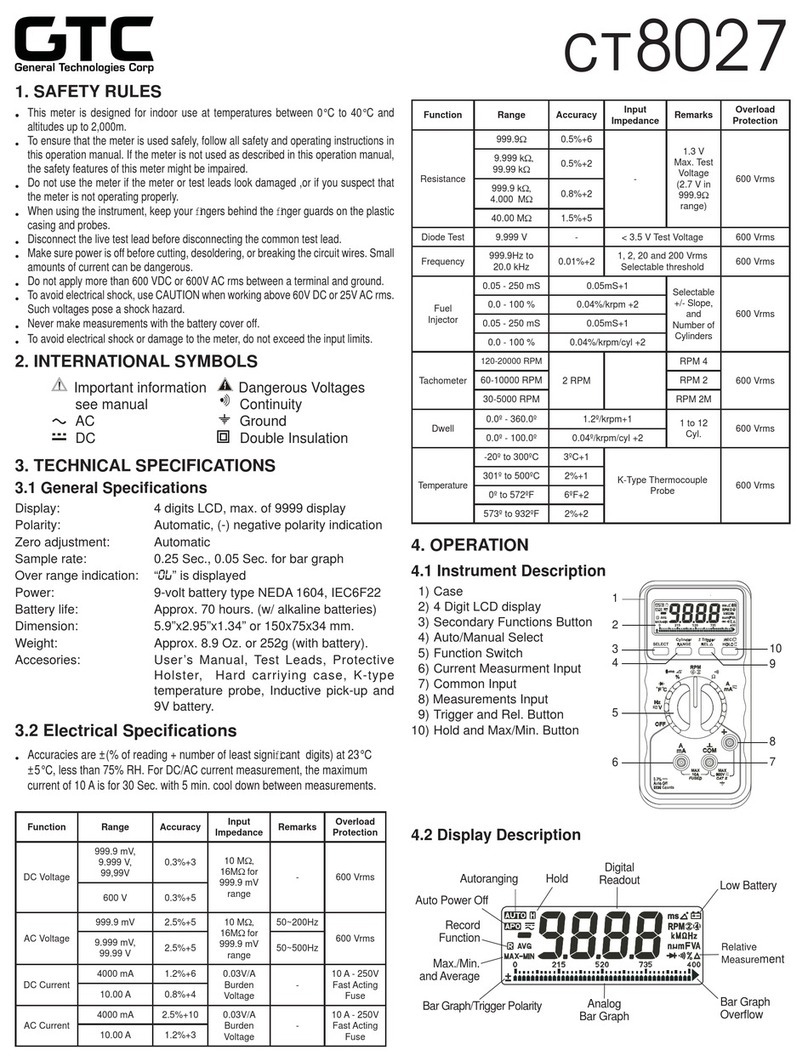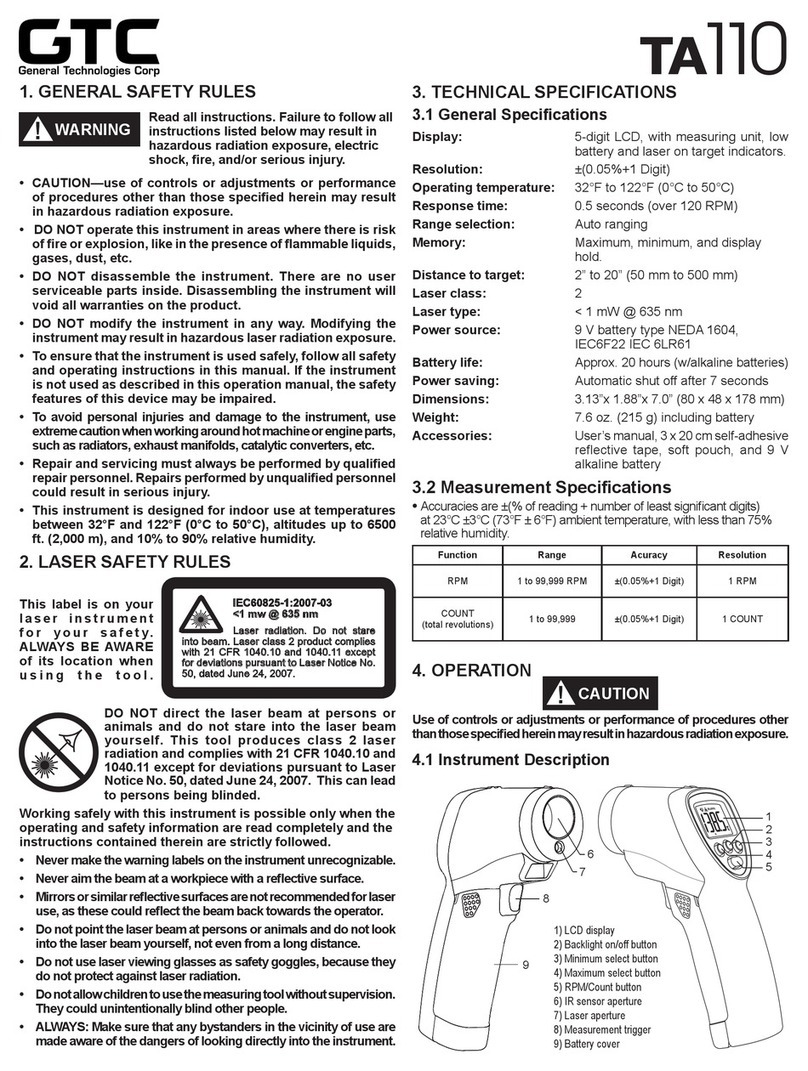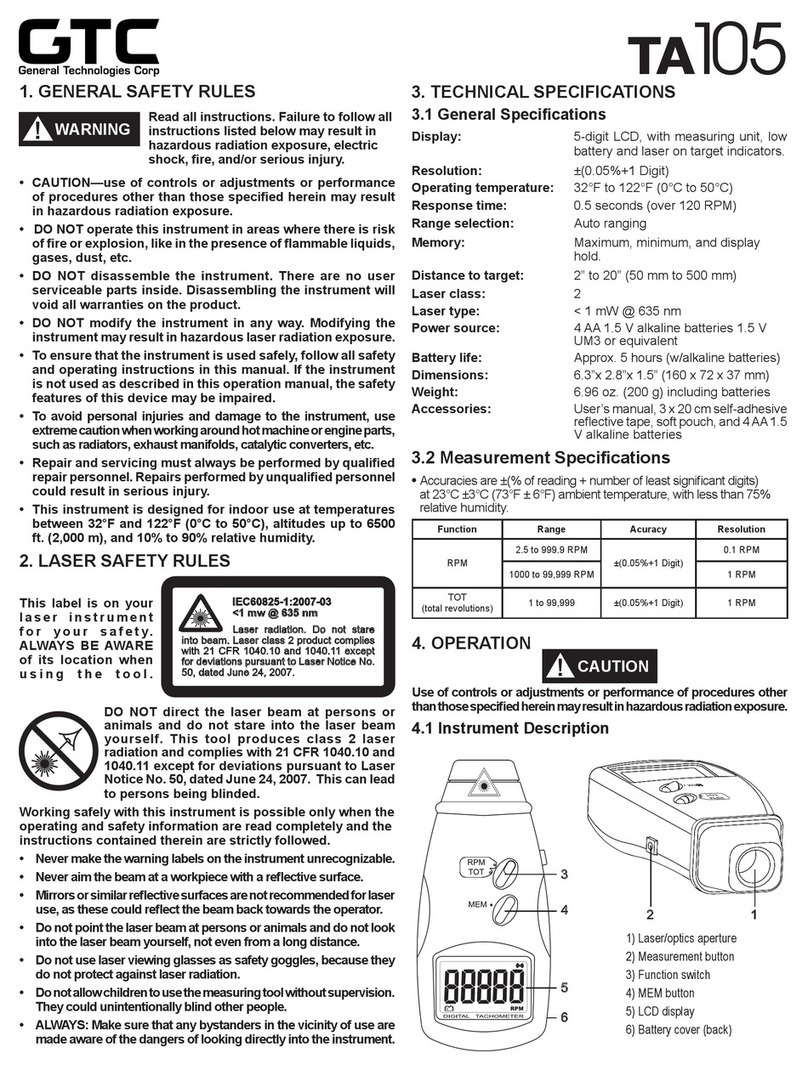
5
LOCATING CURRENT LEAKS
Hook up and procedures for locating current leaks are essentially the same as for locating short circuits.
The transmitter sees the leak as a weak short circuit or connection to ground. For locating a current leak
simply follow the wire with positive (beeping and flashing) audio/visual indicator’s feedback on the tracer,
from source to leak location (short circuit).
For step by step directions please refer to Locating Short Circuits, (for some hints and specific differences
refer to the notes below:
Notes: The type and size of the leak in the circuit (impedance or resistance to ground) determines the
amount of current leaking from the circuit. Small leaks (i.e. low current) will reduce the range of the tracer
accordingly. In all cases the receiver probe should be positioned as close as possible to the wires, in order
to maximize the signal captured by the tracer. For hook up refer to Fig. 1 and Fig. 2.
LOCATING OPEN CIRCUITS
Refer to the hook up reference chart.
1. Observe the limits and safety precautions at all times.
2. Connect the transmitter in series with the open ended wire, making sure one of the unit’s clips is
connected to the circuit’s positive supply or ground. A fuse socket (with the fuse removed), a connector
etc., provides a convenient place as shown in Fig. 1, 2, 3, or 4.
3. Make sure that the clips are firmly attached to their connection points, and switch the transmitter on by
pressing the On/Off button. Observe if the green LED on the transmitter is lighted up. In the case of
having connected the unit to any place other than the fuse socket, check that the circuit’s fuse is
installed and in working condition (not open). If necessary replace with a new fuse with same rating.
4. Switch the tracer on, and check if the green LED starts flashing.
5. Slowly sweep the wire with the tracer, ensuring the probe is perpendicular and above or below the wire
being traced and as close as possible to it.
6. Follow the wire or check it at different points, starting from the transmitter and moving towards the load
(accessory, light, etc.) observing the positioning of the probe as visual signal (flashing green LED light)
indicates the integrity of the circuit. If beeping and flashing slows or stops, it indicates that the probe is
either moving away from the wire or it has passed beyond the open, break or bad connection in
the circuit.
7. Double check by positioning the probe before and after the suspected place. If the open circuit point
has been found, the audio/visual indicators will show circuit integrity on one side, and not on the other.
8. At this point, where the audio/visual signal stops, you have found the open circuit.
9. When the test is completed, switch off the transmitter unit pressing the On/Off button and disconnect
from circuit. You may also switch the tracer by pressing the On/Off button on the unit. However to
conserve power, the tracer will automatically turn off after 3 minutes or not being used.
Note: The closer the tracer probe is to the wire carrying the signal, the faster the beeping and the flashing
will be.
WIRE IDENTIFICATION
Refer to the hook up reference chart.
Wiring can be identified by following the hook up and procedures for locating short circuits or open circuits,
depending on the particular configuration of the circuit.
For identifying wires with load connected: Connect transmitter as described in Locating Short Circuits to the
circuit to be identified. Then proceed to scan all suspected wiring with the tracer’s probe until the flashing
and beeping is at its maximum. In the case of tightly packed wires (bundles, conduits, etc.), it may be
necessary to spread these apart to facilitate the identification process of a particular wire.
For identifying wires without load connected: Connect transmitter as described in Locating Open Circuit’s to
the circuit to be identified. Then proceed to scan all suspected wiring with the tracer probe until the flashing
and beeping is at its maximum. In the case of tightly packed wires (bundles, conduits, etc.), it may be
necessary to spread these apart to facilitate the identification process of a particular wire.












